The Chapel of San Luca in the Santissima Annunziata complex has been restored in a magnificent revival of the chapel’s many masterpieces, thanks to Friends of Florence. The chapel is also known as the Cappella dei Pittori (Painter’s Chapel), with the restoration works commissioned by the Accademia delle Arti del Disegno.
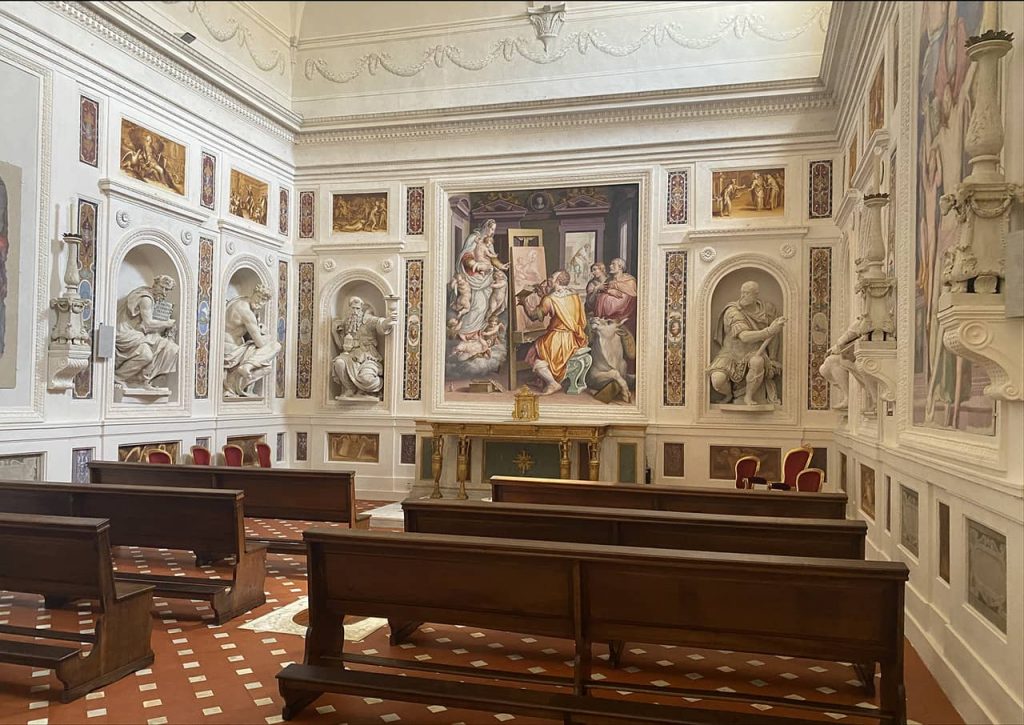
Lasting about 2 years, the works were carried out under the surveillance of the Superintendency for Archeology, Fine Arts and Landscape for Florence, Pistoia and Prato. The restoration presented an opportunity to preserve and study one of the most fascinating complexes of the late Florentine Renaissance, characterized by the use of many materials and techniques.
Prior to the restoration, the original chapel had variously been altered with whitewashing, repainting on the stucco, breakages, traces of alluvial mud on the sculptures in the niches (as a result of the 1966 flood), and detachment of colour from the frescoes. Diagnostics at the beginning of the project determined the nature of the interventions performed over time, followed by the long and meticulous restoration of the materials of which the chapel was originally composed.
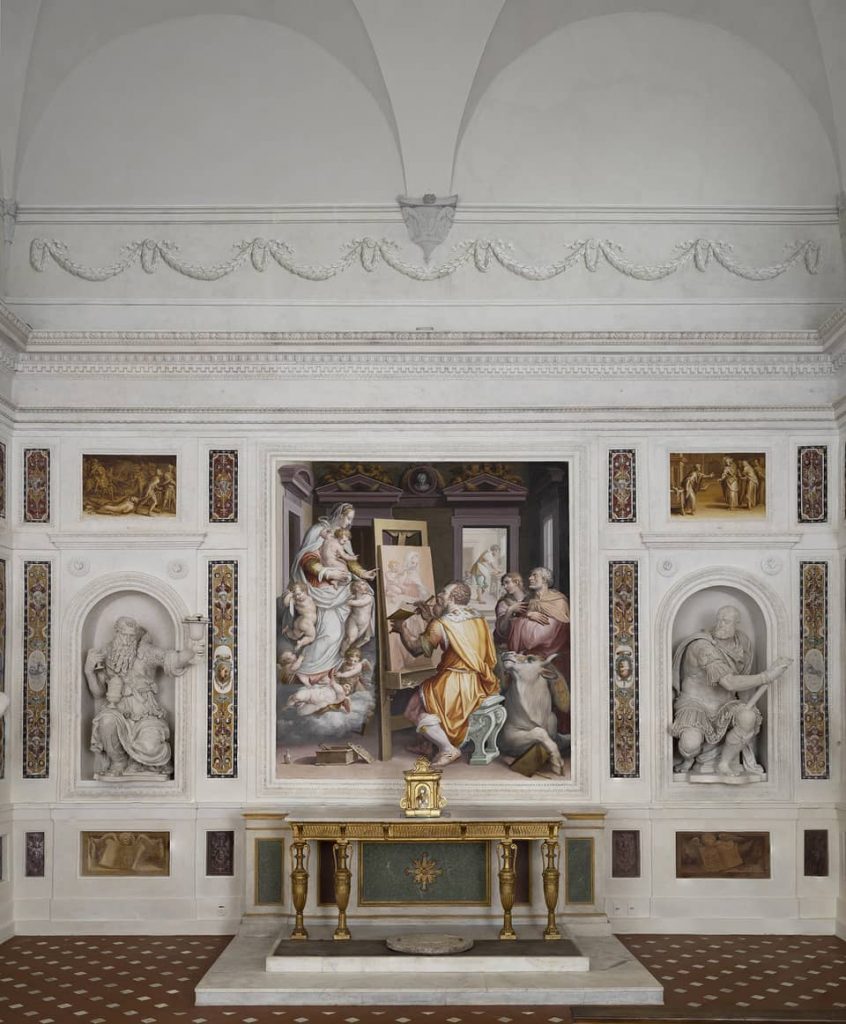
History of the Chapel
The chapel has been a symbolic site in Florentine artistic life since 1565, built thanks to the efforts of the sculptor Friar Giovannangelo Montorsoli who convinced the prior general Brother Zaccaria Faldossi first to host and then to donate space to the newly formed Accademia delle Arti del Disegno that had been formed in 1563 thanks to Grand Duke Cosimo 1, Giorgio Vasari and Vincenzo Borghini. The esteemed academy included Leonardo Da Vinci and Michelangelo Buonarroti amongst its members.
Initially dedicated to the Holy Trinity, the chapel was the place where the most famous artists gathered to celebrate the solemn oaths of the association and to hold lively academic meetings on the occasion of the Trinitarian feast, of which the three arts of painting, sculpture and architecture were celebrated. Artists buried in the crypt (which underwent restoration in 2018) include Jacopo Pontormo, Benvenuto Cellini, Lorenzo Bartolini and Rodolfo Siviero.
At the time of Napoleonic suppression, the chapel was transformed for the private use of Bishop Eustachio de Osmond, involving the closure of the original entrance and the relocation of the altar to under the Vasari fresco. The second event which caused the most impact to the chapel, was the tragic flood in 1966 that caused vast amounts of damage.
Today, it’s used by the professors of the Accademia delle Arti del Disegno for the celebration of mass for St Luke’s Day (San Luca) on October 18, and for other religious functions related to the academy and its members.
The artworks and restoration
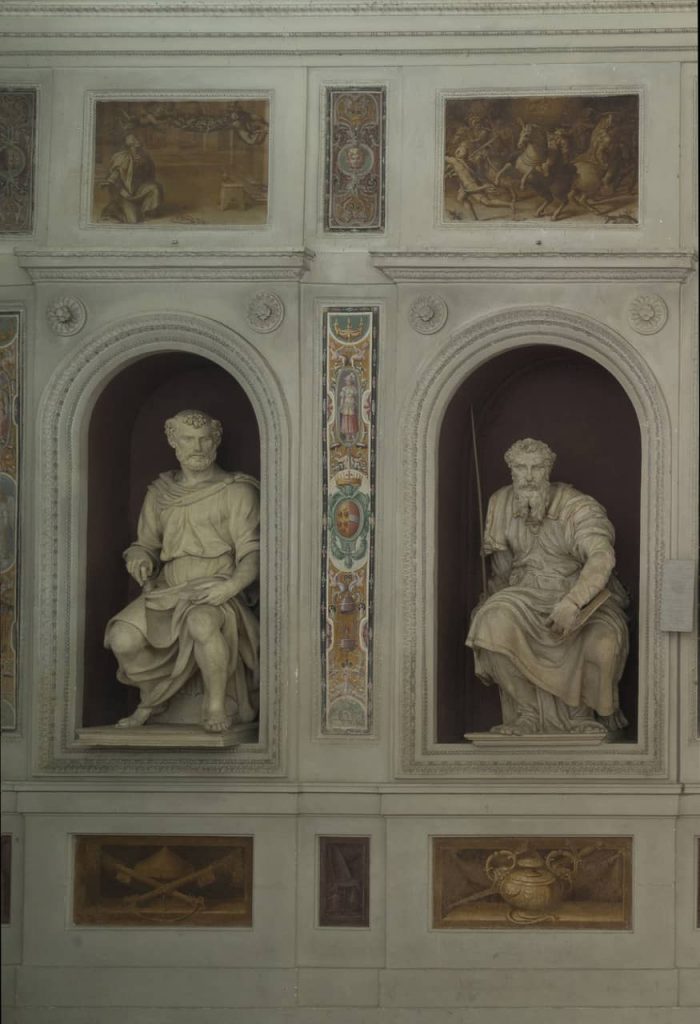
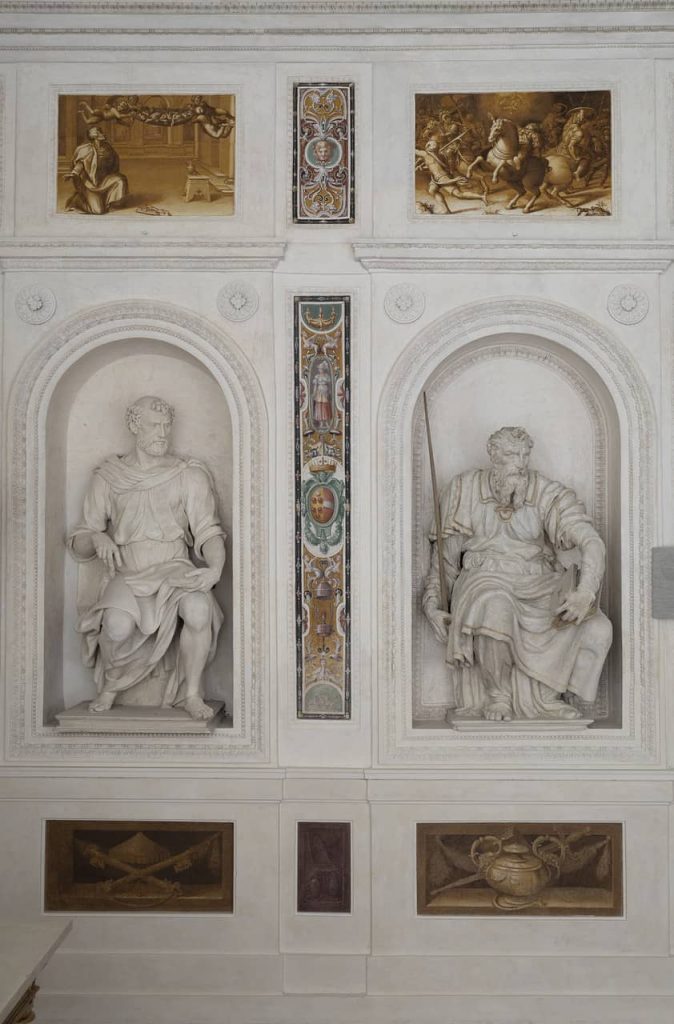
On the current high altar (east wall) is Giorgio Vasari’s fresco depicting San Luca in the artist’s own guise, painting the Virgin Mary, an allegory from a mid-16th century painting studio. On the opposite wall is the Allegory of Architecture (west wall) by Santi di Tito, representing Solomon ordering the construction of the temple in Jerusalem. On the south wall (entering on the right) where the main altar of the chapel was once located, you can admire the Trinity by Alessandro Allori with angels supporting the body of Christ, and portraits by Pontormo and Bronzino below (post 1572). On the north wall is Jacopo Pontormo’s Sacra Conversazione, brought here after 1823. The upper and lower registers feature works made between 1565 and 1575, attributed to Stradano, Sustris, Fedini and Del Barbiere.
Large statues depict the apostles and other biblical characters, emerging almost lifelike from the niches. Ten of the original twelve remain, with Giosuè (Joshua) (by Vincenzo Danti and Giacomo Lastricati) depicted with the head of the Grand Duke Cosimo, in homage to the founder of the academy and of the new duchy.
The restoration was carried by Cristiana Conti, Alessandra Popple and Gioia Germani. The stucco was treated with various layers of whitewashing, lime and tempera over time, which had almost completely concealed the original modelling. The original works were recovered and conserved throughout the two-year long process.
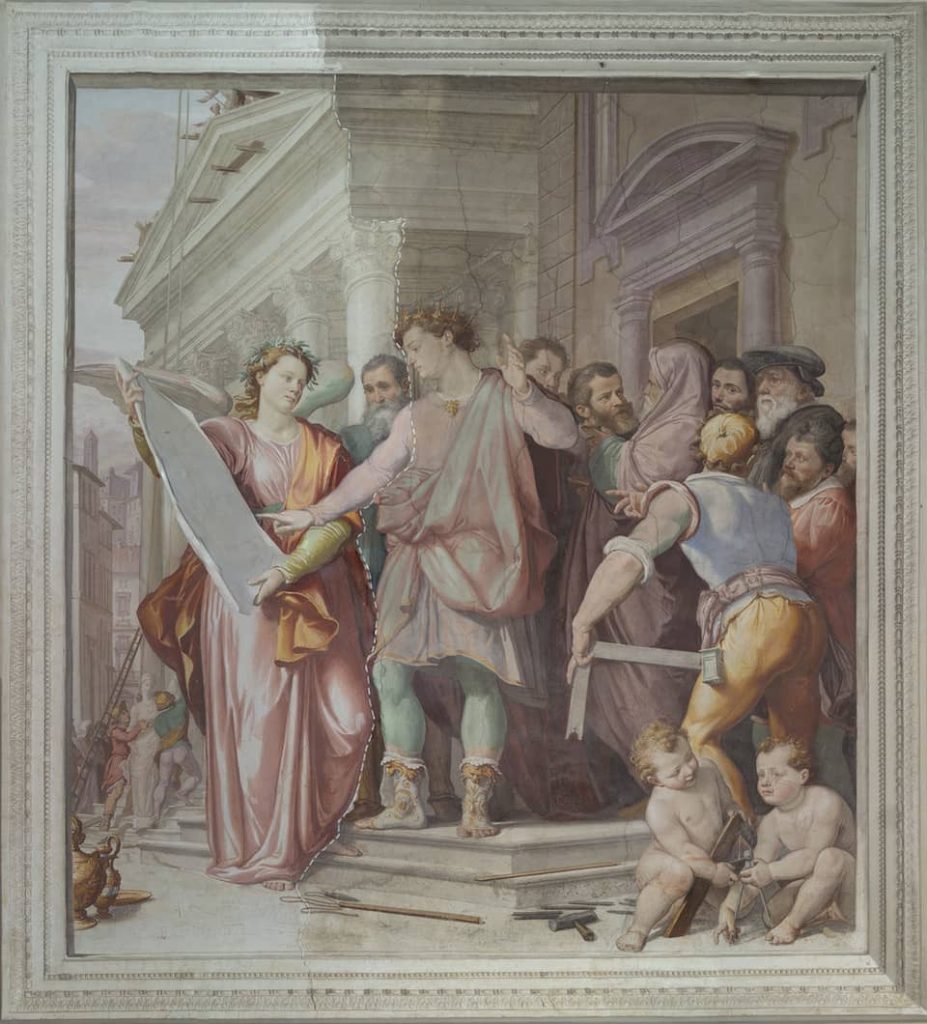
Cristina Acidini, President of the Accademia delle Arti del Disegno, commented “Thanks to the decisive and generous support of the Friends of Florence, on the initiative of our secretary general Giorgio Bonsanti, the restoration carried out by Goia Germani, Cristiana Conti and Alessandra Popple has returned full visibility to the historic heart of the Accademia delle Arti del Disegno: the chapel where the first meetings were held and artists received their funeral honours. What was the first collective undertaking of this group of innovative and unsuspecting artists led by Giorgio Vasari, it presents itself today in all its iconographic complexity and in all its stylistic plurality, in the name of a rediscovered harmony”.
Simonetta Brandolini d’Adda, President of Friends of Florence, added “Supporting the restoration of this beautiful and important place for art is a great point of pride for Friends of Florence…My heartfelt thanks also go to the donor who supported this wonderful project: the Giorgi Family Foundation.”








